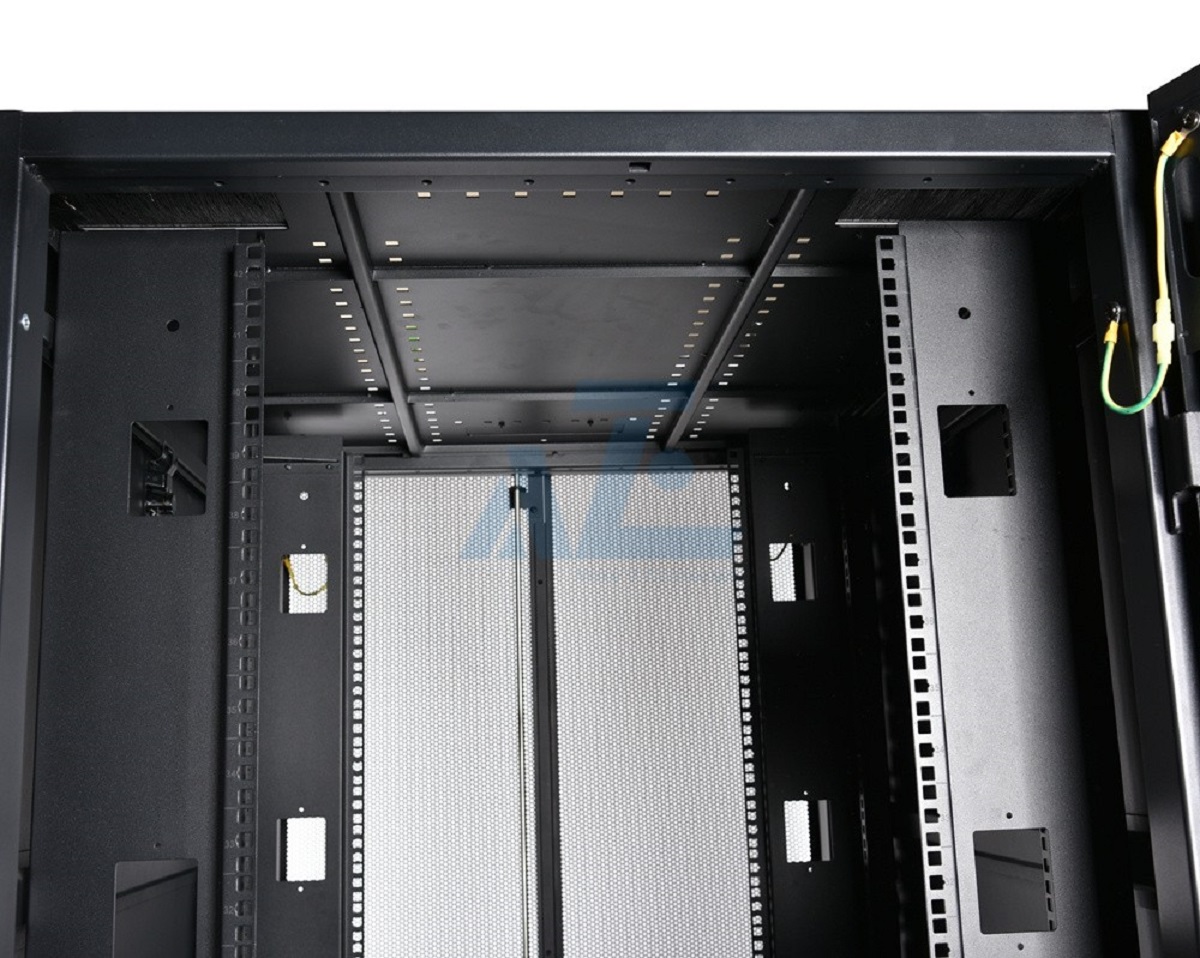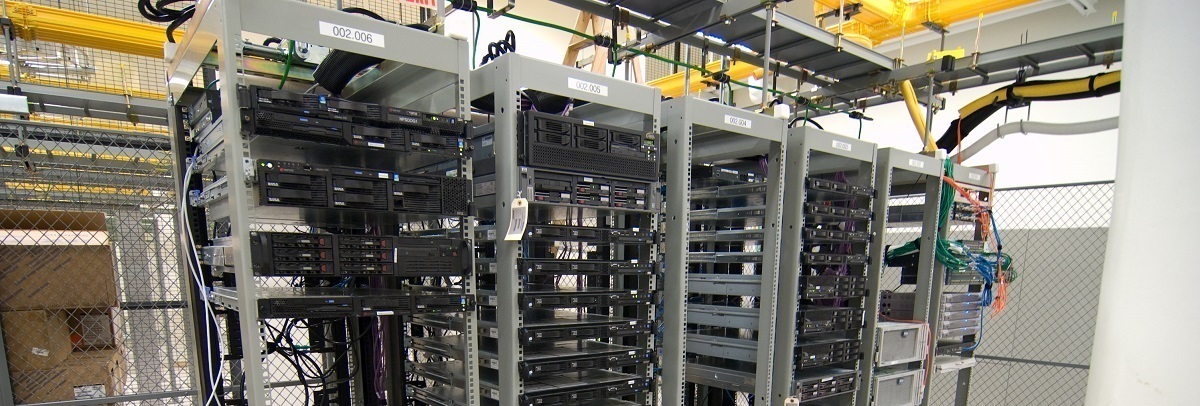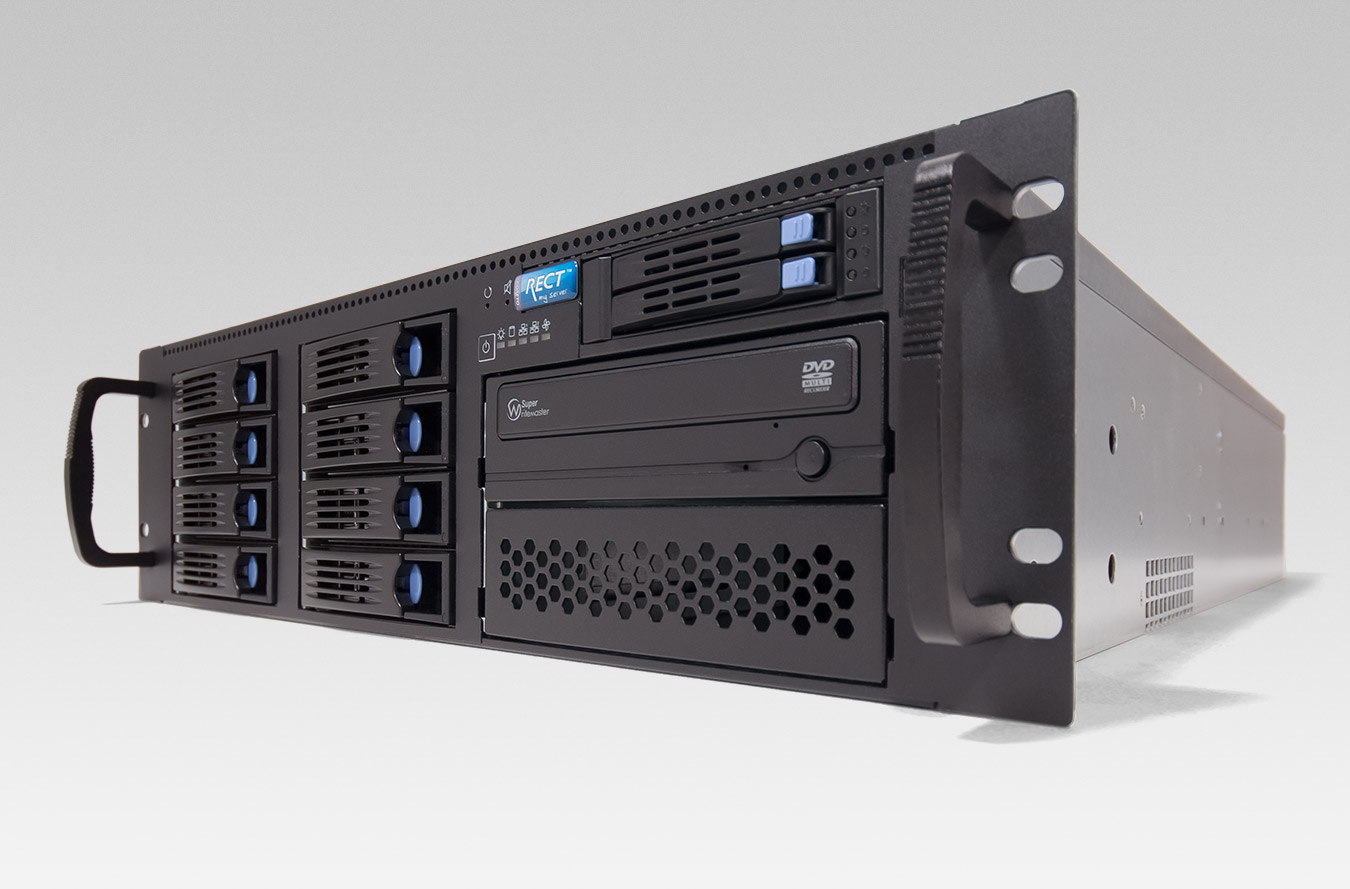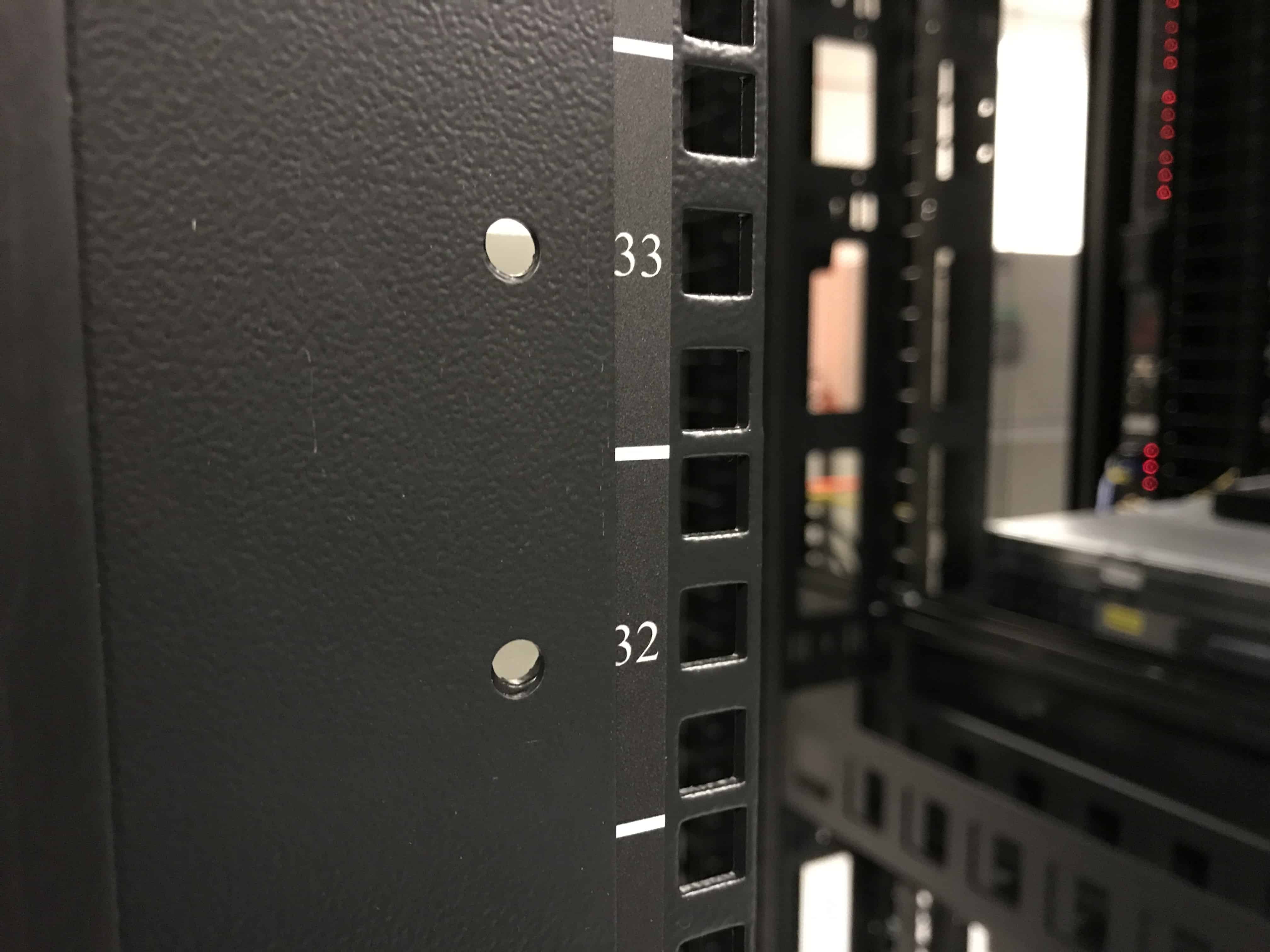Introduction
Welcome to our in-depth guide on 48U server racks. In today’s digital age, businesses rely heavily on data storage and networking systems to keep their operations running smoothly. A critical component of these systems is the server rack, which allows for efficient organization and management of servers, switches, and other network equipment.
A 48U server rack is a popular choice for medium to large-scale data centers and IT environments. It offers ample space for mounting servers, networking devices, and other equipment. The “48U” in its name refers to the rack’s height, which is measured in rack units (U). Each rack unit is equivalent to 1.75 inches, so a 48U server rack is approximately 84 inches tall.
In this guide, we’ll provide you with all the essential information you need to know about 48U server racks. We’ll cover the standard measurements, dimensions, common uses, benefits, and factors to consider when choosing a 48U server rack. Whether you’re an IT professional setting up a data center or a business owner in need of scalable infrastructure, this guide will help you make informed decisions.
So, let’s dive right in and explore the world of 48U server racks and how they can benefit your organization’s data storage and networking needs.
What is a 48U server rack?
A 48U server rack is a specialized enclosure used to house and organize servers, networking equipment, switches, and other components in data centers and IT environments. The “48U” designation refers to the rack’s height measurement, specifically 48 rack units. Each rack unit is equivalent to 1.75 inches, making a 48U server rack approximately 84 inches tall.
These server racks are designed with durability, organization, and efficient airflow in mind. They typically feature a sturdy metal frame, adjustable mounting rails, and removable side panels for easy access to the equipment. The doors of the rack may be perforated or have vents to facilitate airflow and maintain optimal temperature levels.
The primary purpose of a 48U server rack is to provide a centralized and secure location for housing servers and networking equipment. The height of a 48U rack allows for significant storage capacity, making it suitable for medium to large-scale data centers or IT environments that require substantial server infrastructure.
By utilizing a 48U server rack, organizations can achieve efficient cable management, improved organization, and reduced downtime. The rack’s multiple mounting positions and adjustable rails enable IT professionals to optimize the space according to their specific requirements. Additionally, the centralized housing facilitates easier maintenance and troubleshooting, as all the equipment is neatly organized in one place.
It’s worth noting that the 48U measurement refers to the rack’s external height. The actual space available for mounting equipment may vary depending on factors such as the thickness of the mounting rails and the design of the server rack.
Now that we understand what a 48U server rack is, let’s delve into the standard measurements and dimensions associated with this type of rack.
Standard measurements of a 48U server rack
When it comes to understanding the standard measurements of a 48U server rack, there are a few key dimensions and definitions to be aware of. These measurements help ensure compatibility and proper installation of equipment within the rack.
The external height of a 48U server rack is 84 inches, as mentioned earlier. This height measurement includes the rack’s frame, casters or leveling feet, and any additional top covers or cable management accessories. It’s essential to consider this measurement when planning for the physical space required for the server rack.
Inside the server rack, the usable vertical space for mounting equipment is specified by the rack unit (U) measurement. In a 48U rack, there are a total of 48 rack units. Each rack unit represents 1.75 inches of vertical space. Therefore, multiplying the number of rack units by 1.75 inches gives you the usable interior height of the rack, which is around 84 inches.
However, it’s important to note that not all equipment occupies the full height of a rack unit. Some servers, switches, or networking equipment may be shorter or taller than a single rack unit. This variation means that you can accommodate more than 48 individual pieces of equipment within a 48U server rack, but the total physical height cannot exceed 84 inches.
In terms of width, server racks typically follow standard measurements. The most common width for a server rack is 19 inches, allowing for easy compatibility and consistent sizing of servers and other equipment. The depth of a server rack can vary depending on specific models and manufacturers, but a common depth range is between 30 and 42 inches. These dimensions provide sufficient space for most standard rack-mounted equipment.
It’s worth mentioning that there are also other rack sizes available, such as 42U, 36U, or 24U. These different sizes are suitable for varying needs and scalability requirements. However, the 48U server rack remains a popular choice for organizations with extensive data center infrastructure.
Now that we have covered the standard measurements of a 48U server rack, let’s explore the specific dimensions of this rack type in the next section.
Dimensions of a 48U server rack
Understanding the dimensions of a 48U server rack is crucial for proper planning and installation of equipment. Along with the standard measurements mentioned earlier, there are specific dimensions that define the overall size and capacity of a 48U rack.
A typical 48U server rack has an exterior width of 19 inches, adhering to the industry-standard for rack-mounted equipment. This width allows for compatibility with a wide range of servers, switches, and other devices that are designed to fit within a standard 19-inch rack.
The depth of a 48U server rack can vary depending on the specific model and manufacturer. Generally, the depth ranges from 30 to 42 inches or more, providing ample space for accommodating various types of equipment and cables. It’s essential to consider the depth carefully, especially if you have devices with longer protrusions or if you need to allocate space for cable management.
For the height dimension, a 48U server rack measures approximately 84 inches. This height allows for the installation of up to 48 individual rack units, with each unit representing 1.75 inches of vertical space. However, it’s important to note that the usable interior height can be affected by factors such as the thickness of the mounting rails and the design of the server rack.
In terms of weight capacity, a 48U server rack is designed to support a significant amount of equipment. The weight capacity can vary depending on the construction and materials used in the rack. It’s crucial to check the manufacturer’s specifications for a specific rack model to ensure it meets your equipment’s weight requirements.
Additionally, it’s worth noting that most 48U server racks are designed to be freestanding. They often come with leveling feet or casters for easy mobility and stability. Some racks may offer options for anchoring to the floor to enhance security and stability, particularly in environments where there may be vibrations or movement.
By understanding the dimensions of a 48U server rack, you can plan and allocate space effectively, ensuring that your equipment fits properly and that there is sufficient room for maintenance, cable management, and proper airflow.
Next, we will explore the common uses for a 48U server rack, shedding light on how this versatile piece of equipment can benefit various industries and organizations.
Common uses for a 48U server rack
A 48U server rack serves as a critical component in various industries and organizations that rely on information technology and data storage infrastructure. Its large size and capacity make it suitable for a wide range of applications. Here are some common uses for a 48U server rack:
- Data Centers: Data centers house extensive server infrastructure for organizations, providing services such as cloud computing, hosting, and data storage. A 48U server rack is commonly found in data centers, where it can accommodate a significant number of servers, switches, and storage devices.
- Enterprise IT Environments: Larger businesses with extensive internal IT departments may choose to have their dedicated server rooms or server closets. These environments need robust infrastructure to keep their systems running smoothly, and a 48U server rack can provide the necessary space and organization to house the equipment.
- Telecommunications: Telecommunication companies rely on server racks to house network equipment, such as switches, routers, and communication servers. A 48U server rack ensures sufficient space for accommodating these devices and enables efficient cable management and easy access for maintenance and upgrades.
- Media and Entertainment: The media and entertainment industry deal with large amounts of digital content, requiring storage and processing capabilities. Server racks play a crucial role in housing the necessary servers and storage devices for handling media files and delivering content efficiently.
- Research Facilities: Research institutions, laboratories, and scientific facilities often require robust computing infrastructure for data processing and analysis. A 48U server rack can provide the necessary space and capacity to house the servers and high-performance computing clusters required for scientific research.
- Colocation Facilities: Colocation facilities offer space and infrastructure for businesses to host their servers and networking equipment. Companies that do not have the resources or space to house servers internally can benefit from colocating their equipment in a 48U server rack within a secure and professionally managed facility.
These are just a few examples of the common uses for a 48U server rack. The versatility and capacity of a 48U rack make it suitable for various industries and organizations that require reliable and scalable data storage and networking solutions.
Now that we have explored the common uses of a 48U server rack, let’s delve into the benefits of using this type of rack in more detail.
Benefits of using a 48U server rack
Using a 48U server rack offers numerous benefits for organizations that rely on data storage and networking infrastructure. Let’s explore some of the key advantages of using a 48U server rack:
- Ample Space: The 48U height of the server rack allows for significant storage capacity, accommodating a large number of servers, switches, and networking equipment. This ample space ensures scalability and room for future expansion, providing organizations with the flexibility to meet evolving IT needs.
- Organization and Enhanced Efficiency: A 48U server rack provides a centralized and organized space to house servers and networking equipment. By neatly arranging and managing the equipment within the rack, IT professionals can easily locate and access the necessary components for maintenance, upgrades, or troubleshooting, saving valuable time and effort.
- Cable Management: Proper cable management is crucial for maintaining a clean and efficient IT infrastructure. A 48U server rack offers ample space and built-in cable management features, such as vertical cable management channels and cable routing options. This allows for better cable organization, reducing the risk of tangled or damaged cables and improving airflow within the rack.
- Improved Airflow and Cooling: Server racks are designed with airflow in mind to prevent overheating and ensure optimal performance of servers and networking equipment. A 48U server rack typically features perforated doors or vented panels to facilitate air circulation. Additionally, they often have provisions for cable management that prevent cables from obstructing airflow, leading to better cooling efficiency and reduced risk of equipment damage.
- Security and Physical Protection: Server racks provide a secure and locked environment for servers and equipment, safeguarding critical data and preventing unauthorized access. The sturdy construction and lockable doors of a 48U server rack add an additional layer of physical protection, ensuring that valuable equipment remains safe from theft or tampering.
- Flexibility and Compatibility: A 48U server rack follows industry-standard dimensions, making it compatible with a wide range of rack-mountable servers, switches, and networking devices. This allows organizations to easily integrate their existing equipment into the rack, promoting seamless compatibility and flexibility in the infrastructure setup.
By leveraging the benefits of a 48U server rack, organizations can optimize their data storage and networking infrastructure, leading to enhanced efficiency, improved organization, and better management of IT resources.
Now that we have explored the benefits of using a 48U server rack, let’s shift our focus to the factors to consider when choosing the right rack for your organization’s needs.
Factors to consider when choosing a 48U server rack
Choosing the right 48U server rack requires careful consideration of various factors to ensure it meets your organization’s specific needs and requirements. Here are some key factors to consider when selecting a 48U server rack:
- Space and Scalability: Evaluate your current and future space requirements. Consider the physical dimensions of the rack and ensure that it fits within your available space. Additionally, assess the scalability needs of your organization to determine if the 48U rack can accommodate future expansion and equipment additions.
- Weight Capacity: Consider the weight of your servers and networking equipment to ensure that the 48U server rack can securely support the load. Check the manufacturer’s specifications for the rack’s weight capacity to avoid overloading it, which could lead to instability or damage.
- Cable Management: Good cable management is crucial for maintaining a tidy and efficient server rack. Look for racks with built-in cable management features, such as vertical cable management channels, cable trays, or cable rings. These features will help you organize and route cables properly, reducing clutter and improving airflow.
- Access and Security: Consider the level of access and security required for your environment. Determine if you need rack doors with locks or if an open-frame design is sufficient. Additionally, assess whether you need additional security features, such as removable side panels or a locking system for individual equipment compartments.
- Airflow and Cooling: Ensure that the server rack provides proper airflow and ventilation for cooling the equipment. Look for racks with perforated doors or vented panels that allow for sufficient airflow. Additionally, consider any additional cooling mechanisms you may need, such as fans or rack-mounted cooling units, to prevent overheating.
- Compatibility: Assess the compatibility of the 48U server rack with your existing equipment. Check if the rack follows industry-standard dimensions, such as a 19-inch width, to ensure compatibility with rack-mountable servers, switches, and other networking devices.
- Management and Monitoring: Explore any additional management and monitoring features offered by the server rack. Some racks may include features such as power distribution units (PDUs), cable management accessories, or remote monitoring capabilities. Consider these features based on your organization’s needs and the level of control and visibility required.
- Manufacturer Reputation: Research and consider the reputation of the manufacturer when selecting a 48U server rack. A reputable manufacturer often produces high-quality racks with reliable construction, durability, and customer support.
By carefully evaluating these factors, you can choose a 48U server rack that meets your organization’s needs, provides efficient organization and management, and supports reliable and scalable data storage and networking infrastructure.
Now that we have explored the factors to consider when choosing a 48U server rack, let’s conclude our guide on this essential component of modern IT environments.
Conclusion
In conclusion, 48U server racks play a crucial role in providing a centralized and organized solution for housing servers, switches, and networking equipment in various industries and organizations. Their large size and capacity make them suitable for organizations that require scalable and efficient data storage and networking infrastructure.
We covered the key aspects of 48U server racks in this guide, including their standard measurements, dimensions, common uses, benefits, and factors to consider when choosing the right rack for your organization. By understanding these aspects, you can make informed decisions that align with your specific requirements.
From providing ample space and organization to enhancing cable management and improving airflow and cooling, a 48U server rack offers numerous advantages. It helps optimize IT infrastructure, reduces downtime, and allows for seamless expansion and scalability. Additionally, the security features of server racks ensure the protection of valuable equipment and data.
When choosing a 48U server rack, factors such as space and scalability, weight capacity, cable management, access and security, airflow and cooling, compatibility, management and monitoring features, and the reputation of the manufacturer should be carefully evaluated.
Ultimately, investing in a high-quality 48U server rack that meets your organization’s specific needs will contribute to the efficient operation of your data storage and networking infrastructure, leading to enhanced productivity and streamlined IT management.
We hope this guide has provided a comprehensive understanding of 48U server racks and their significance in modern IT environments. With this knowledge, you can confidently choose the right server rack to support your organization’s current and future needs.

























